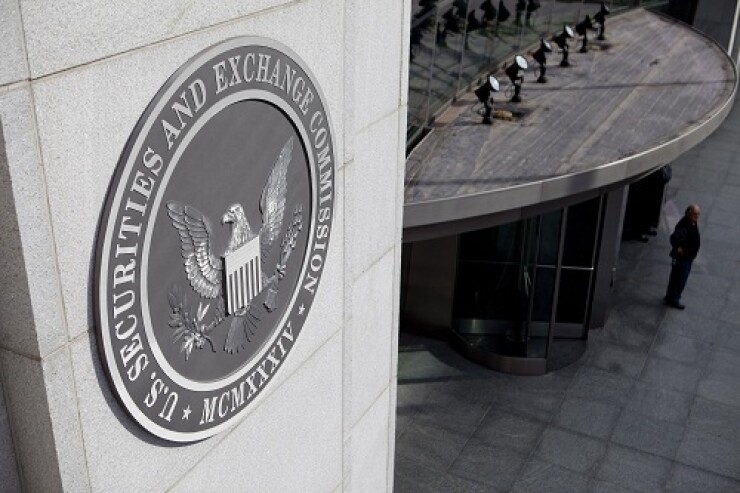WASHINGTON — The SEC's Office of Compliance Inspections and Examinations has been dramatically retooling its approach to RIA exams.
Commission staffers will try to identify firms engaged in a particular type of activity that could raise a red flag, gather information about the firm, and, if the conduct indeed appears risky, send out an exam team.
Once at the home office, however, examiners will train their scrutiny on the specific activities that brought them out in the first place, according to Peter Driscoll, OCIE's acting director.
"Gone are the days of these wide, full-scope — we're in there for a long period of time — those types of exams," Driscoll said at the Investment Adviser Association's compliance conference.

"We've really focused on efficiency and effectiveness."
Last year, advisor exam staff only reached 11% of the advisors registered with the commission. Thanks in large part to an internal reorganization that shifted brokerage staffers to the RIA side of the division, however, OCIE examiners have already been able to reach substantially more advisors this year than at the same point in 2016.
As the RIA business model gains share in the industry, and as financial markets continue to increase in value, pushing more advisors' AUM totals over the $100 million threshold to require SEC registration, the commission is dealing with an increase in registrants that shows no sign of slowing down.
TARGETED, MORE NARROW
Those factors have prompted the commission to move away from the type of practice exam where the examiners would scour all areas of the firm in an exhaustive review. Instead, OCIE has been "going in with targeted, shorter, more narrow, but deep dives in particular high-risk areas that we're publishing in our priorities," Driscoll says.
"This is the approach we need to take to be more effective and to get our coverage up," he says.
The new strategy that Driscoll describes at OCIE comes amid a running debate over how to improve the advisor examination program. Some critics have argued that the division isn't as efficient as it could be, and congressional appropriators have objected to requests for large budget increases.
"We've really focused on efficiency and effectiveness," says Peter Driscoll, OCIE's acting director.
Alternative proposals such as enlisting the help of an outside self-regulatory organization or collecting user fees from RIAs to fund examination efforts have not made their way into effect. Some SEC staffers expect that the incoming chairman, if confirmed, might revisit the idea of designating a third-party outfit to help with exam, a step the commission could take on its own, without congressional authorization.
But in the meantime, the agency operates with finite resources and a growing pool of registrants. The SEC, and OCIE in particular, which bills itself as the "eyes and ears" of the commission, has been increasing its reliance on technology as a method of market surveillance.
'LOOKING AT THOUSANDS OF FIRMS'
Feedback from OCIE examiners is operative in shaping the
With those high-risk areas in mind, OCIE staffers will lean on automated data mining and analysis tools to comb through the trove of information they maintain from industry filings and other sources to identify the advisory firms engaged in the riskiest behavior and most deserving of an examination.
Through that process, Driscoll says, OCIE is actually able to quickly review far more firms than are reflected in the oft-cited exam-rate statistic, arguing that the division's market surveillance initiatives are an unheralded but effective regulatory approach.
"It's not captured in any sort of metric, but we'll look at thousands of firms to determine whether or not we should there or not before we go there," Driscoll says. "That doesn't equate to, I would say, our definition of an exam, but there's a lot of resources that go into the process from a risk and surveillance standpoint to make sure that when we're stepping on a plane, going to a particular city to do an exam, that that's the best use of our resources at that time."





